The Deca-augmented 5,10-duoprism
The deca-augmented 5,10-duoprism is a CRF polychoron bounded by 5 decagonal prisms, 50 square pyramids, and 10 pentagonal bipyramids (J13) for a total of 65 cells, 205 polygons (5 decagons, 50 squares, and 150 triangles), 200 edges, and 60 vertices.
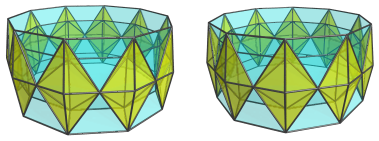
It is constructed by augmenting the 5,10-duoprism with 10 pentagonal prism pyramids. Due to the dichoral angle between the pentagonal prisms in the 5,10-duoprism being exactly 144°, and the dichoral angle between the pentagonal pyramids and pentagonal prism of the pentagonal prism pyramid being exactly 18°, the pentagonal pyramid cells of adjacent augments lie on the same hyperplanes, thus merging into 10 pentagonal bipyramids (J13).
It can be partially Stott-expanded along the symmetries of the decagons to yield the deca-augmented 5,20-duoprism, which has the same structure except with elongated pentagonal bipyramids (J16) instead of the J13 cells, and icosagonal prisms instead of the decagonal prisms.
Structure
Centered on Ring of Decagonal Prisms
The deca-augmented 5,10-duoprism consists of a ring of 5 decagonal prisms:
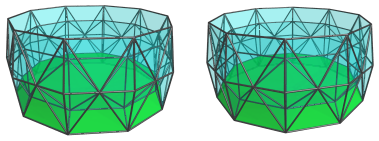
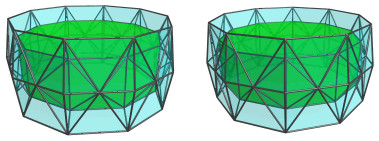
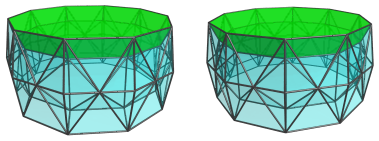
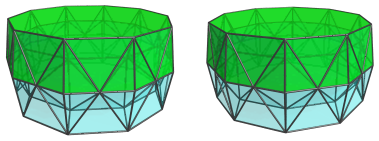
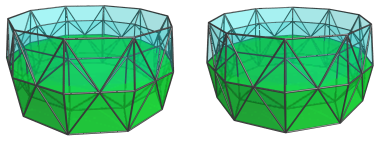
This ring of cells intertwines with an orthogonal ring of pentagonal bipyramids, strung to each other by their apical vertices:
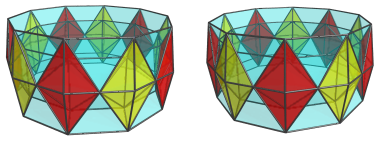
These pentagonal bipyramids are straddled by square pyramids, 5 surrounding each shared apex of the pentagonal bipyramids, for 50 square pyramids in total:
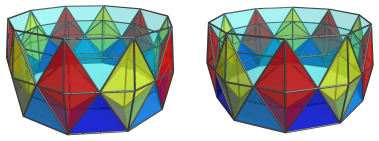
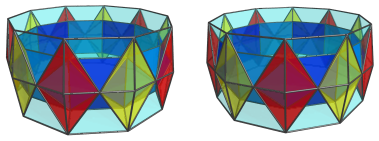
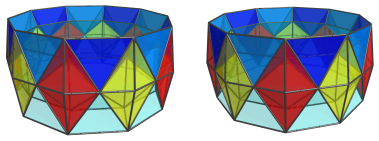
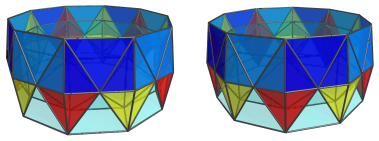
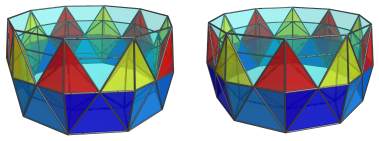
These are all the cells of the deca-augmented 5,10-duoprism.
Centered on a Pentagonal Bipyramid
The Near Side
Now we look at the deca-augmented 5,10-duoprism from a different 4D viewpoint, one that allows us to see the J13 cells more clearly.
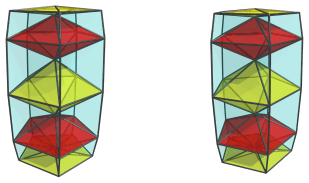
The above image shows 5 of the pentagonal bipyramid (J13) cells that face this new 4D viewpoint.
These J13 cells are straddled by 20 square pyramids:
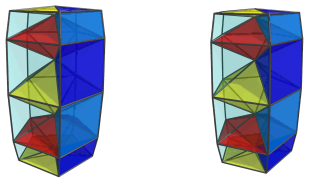
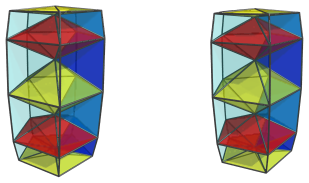
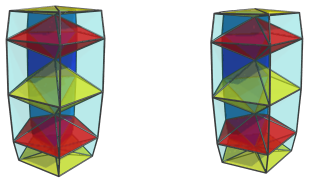
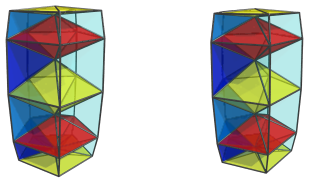
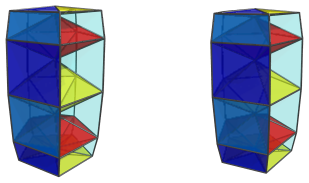
These are all the cells that lie on the near side of the polychoron.
The Far Side
Next, we come to the far side of the polytope. Here are the other 5 pentagonal bipyramids:
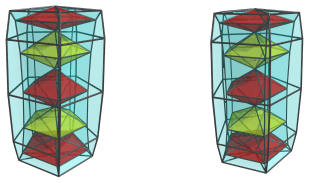
There are 30 square pyramids straddling these cells:
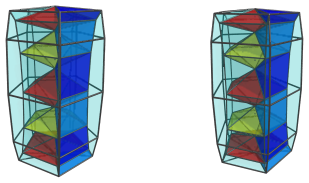
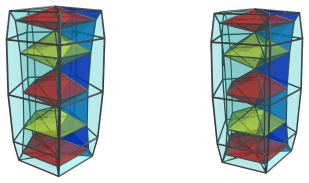
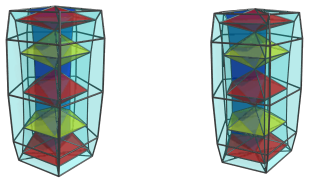
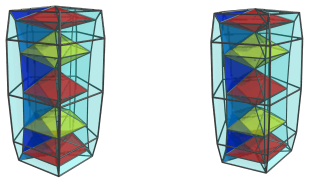
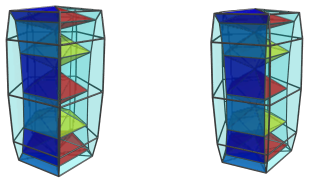
Finally, the square faces of all the square pyramids we've seen so far, including those on the near side of the polychoron, are where the 5 decagonal prisms are fitted:
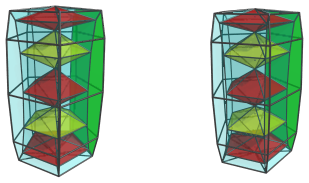
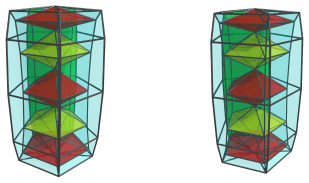
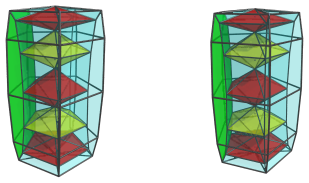
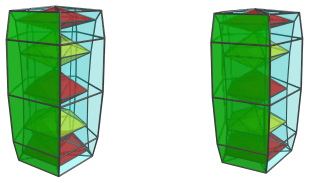
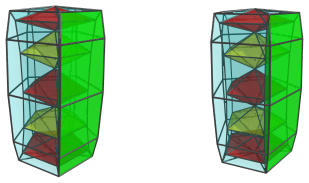
These decagonal prisms lie at a steep angle from the 4D viewpoint, and therefore appear quite squished by foreshortening. They are, of course, perfectly uniform in 4D.
Summary
The following table summarizes the cell counts:
| Region | |||
|---|---|---|---|
| Near side | 5 | 20 | - |
| Far side | 5 | 30 | 5 |
| Grand total | 10 | 50 | 5 |
| 65 cells | |||
Coordinates
The Cartesian coordinates of the deca-augmented 5,10-duoprism, centered on the origin and with edge length 2, are:
- (A, 0, ±2φ, 0)
- (B, ±φ, ±2φ, 0)
- (−C, ±1, ±2φ, 0)
- (A, 0, ±1, ±√(3+4φ))
- (B, ±φ, ±1, ±√(3+4φ))
- (−C, ±φ, ±1, ±√(3+4φ))
- (A, 0, φ2, ±√(2+φ))
- (B, ±φ, φ2, ±√(2+φ))
- (−C, ±φ, φ2, ±√(2+φ))
- (0, 0, 0, ±2A)
- (0, 0, ±2φ, ±2B)
- (0, 0, ±2, ±2C)
where:
| A | = | √((10+2√5)/5) |
| B | = | √((5−√5)/10) |
| C | = | √((5+2√5)/5) |
and φ=(1+√5)/2 is the Golden Ratio.




